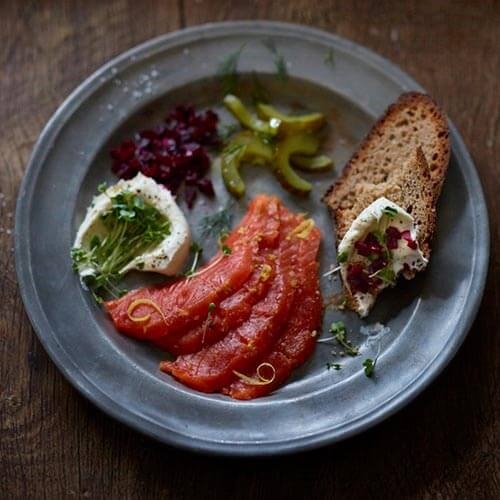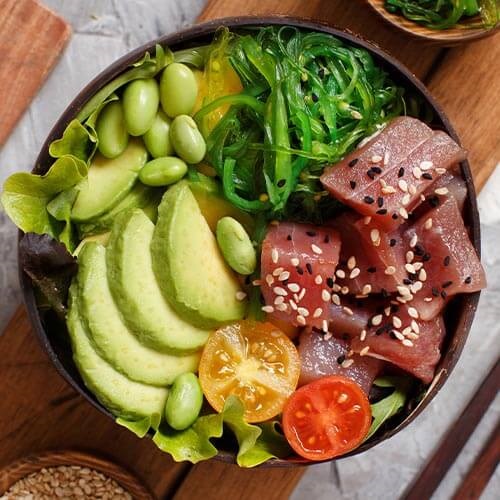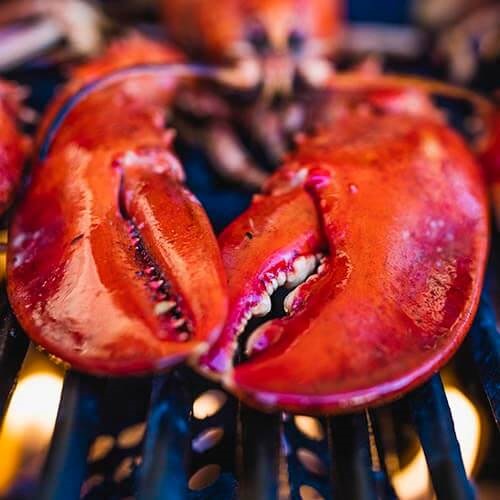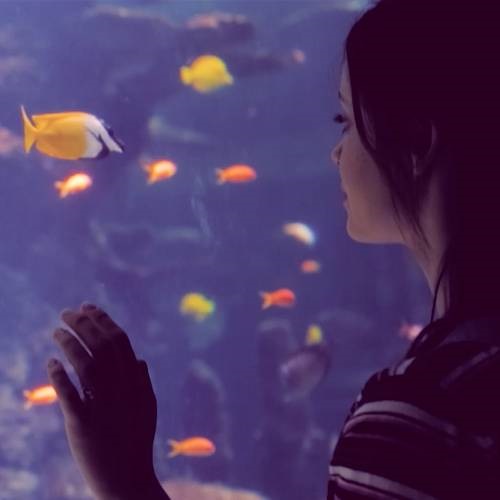Your guide to sustainable fish and seafood in Australia and New Zealand
Shopping for sustainable seafood can be easy. Just look for the MSC blue fish tick label on a wide range of wild-caught seafood products available at your local supermarket in Australia and New Zealand.What is meant by sustainable seafood?
Sustainable seafood means it’s been caught at a level where they’ll be around in the future.
Fish need time to grow and reproduce – sustainable fishing allows this to happen.
Our sustainable seafood guide makes shopping for sustainable seafood easier. Just look for the MSC’s blue fish tick on wild-caught seafood, and you’ll be supporting sustainable fishing practices.
Where to buy wild-caught sustainable seafood
You'll find wild-caught sustainable seafood with the MSC blue fish tick in your local supermarket, select specialty retailers and restaurants.
Supermarkets selling sustainable seafood in Australia and New Zealand
- ALDI
- Coles
- Countdown
- Foodstuffs
- IGA
- New World
- Woolworths
Which seafood is most sustainable?
There is no such thing as a sustainable species of fish. There are only sustainable populations of fish.
When you see the MSC blue fish tick on a wild-caught seafood product or menu, it can be traced back to an MSC certified sustainable fishery. By looking at each fishery individually using science, fisheries prove and improve their sustainability performance.
There's a wide variety of wild-caught sustainable seafood with the blue fish tick. This includes family favourites such as sustainable tuna, sustainable salmon and sustainable prawns.
Wild-caught sustainable seafood available in Australia and New Zealand
Should I eat farmed or wild seafood?
To ensure we have fish forever, we need both farmed seafood that is responsibly caught and wild seafood from a sustainable fishery. Certified seafood can help feed a growing world population, maintain livelihoods and communities while minimising environmental and social impacts.
For responsibly farmed seafood look for the green ASC label.
Wild, sustainable seafood has been caught in a way that means there’s plenty more fish in the sea now and in the future.
Which fishing method is the most sustainable?
We hear a lot about different fishing methods being good or bad. A range of fishing methods are used in commercial fishing from pole and line to bottom trawling. Every type of fishing gear has some effect on the ocean environment. However, if carefully managed, virtually all gear types can be used responsibly and sustainably.
Understand more about different fishing methods and gear types
Are big fishing boats bad?
Each day thousands of fishing boats go out to sea, big and small. But which is more sustainable? We tend to think small equals beautiful and big equals bad, but that's not true. A fishery's sustainability does not depend on the size of its boats - but rather its impact on the marine environment, if populations of fish remain healthy and how it’s managed.
Find out more about 'super trawlers' and why big does not mean bad
Should I only eat FAD free tuna?
‘FAD free tuna’ is tuna caught without a Fish Aggregating Device (FAD). Fishing with FADs can sometimes increase the likelihood of bycatch. However, if managed well FADs can increase the efficiency of fishing and be deemed sustainable.
Find out more about FAD free tuna
Why is seafood sustainability important?
According to the United Nations, over a third of all populations of fish are in decline and around 60% are fished to their limit. Sustainable seafood can help reverse this decline.
Key factors contributing to the problem are overfishing, illegal fishing and destructive fishing. The loss of species and ecosystems also has a serious impact on communities and food security.
Is sustainable seafood healthy?
Sustainable seafood can be good for you and the ocean too.
Seafood is widely considered as a nutritious source of protein and is generally low in cholesterol. Fish are rich in vitamins and minerals such as zinc, iodine, potassium, and vitamin B.
Sustainably caught seafood helps to ensure healthy and resilient oceans full of life.
Is seafood environmentally friendly?
When you choose fish and seafood labelled with the blue fish tick, it can be traced back to an MSC certified sustainable fishery. MSC certified fisheries are well managed and more prepared for environmental changes. These fisheries follow current scientific advice to ensure they catch fish sustainably.
Wild-caught fish is a low carbon food
Additional good news is that fishing has less impact on the climate than the harvesting of other proteins. A study of greenhouse gas emissions of wild fisheries found that each kg of fish caught produces between one and five kilograms of carbon. By comparison, red meat production is estimated to range from 50 to 750 kilograms of carbon per kilogram of meat.
There is also evidence that sustainable fishing helps to reduce carbon emissions by increasing efficiency. For example, increased catches mean that fishing vessels make shorter fishing trips, reducing their fuel use and carbon emissions as a result.
Find out more about climate change and fishing.
Eating a plant-based seafood diet with seaweed
Increasingly we want to lead healthy and sustainable lives and many of us are adopting a plant-based diet. Whether you're a pescetarian or adopt a 'seagan diet' (vegan + sustainable seafood), the rise of seaweed means its more important than ever that we sustainably harvest these carbon-sucking underwater forests.
Sustainable seafood recipes
Explore our wide range of tasty sustainable seafood recipes from chefs across Australia, New Zealand and around the world.
Sorry, we have no recipes for that. Please try another ingredient.
Learn how to cook with seafood

A foodie's guide to salmon
A comprehensive guide to the world's most popular fish.

A foodie's guide to tuna
How a staple can be a gourmet dish.

A foodie's guide to bbq shellfish
Cooking shellfish over hot coals adds a whole new dimension to seafood.
How to identify sustainable seafood
Sustainable seafood is easy to find when it has the MSC blue fish tick label. However, not all seafood is labelled and therefore hard to be certain if it is sustainable. In the absence of a credible label, it is important to ask questions of your fishmonger, restaurant server and retailer:
- Where did the fish come from and can you verify its origin?
- Has the fish been caught or farmed in a sustainable way, and if so, how?
- Is the fish adult size meaning juvenile fish are left to grow and reproduce?
- Are populations of fish abundant in the area the fish is caught?
- Is the market price of the fish stable over time showing a stable supply?
- Does an independent body check to see that the fish is caught sustainably?
Be sure the person selling you your fish is knowledgeable and confident in answering your questions and make your own judgement.
The difference between sustainable seafood labels and seafood rating guides
A third-party sustainable seafood certification label such as the MSC blue fish tick means the product can be traced back to a sustainable fishery. A seafood rating guide looks at a range of factors at the species level to give you a rating such as good choice, avoid or eat less.
When using a seafood rating guide, we recommend using one that is globally credible and based on science such as Monterey Bay Aquarium Seafood Watch.
Seafood certification and rating programs are two ways to trust that you're making an ocean-friendly choice when buying fish and other seafood products.
Both serve important roles in driving a more transparent seafood supply chain and encouraging companies to make continuous improvements toward sustainability.
They're independent of seafood brands, retailers or restaurants, but work with them to keep them accountable and responsible.
Find out how the MSC was at the birth of the modern-day sustainable seafood movement.
Help protect our ocean

Back on country - the Kuti Co story
Kuti Co is a Ngarrindjeri-owned enterprise providing opportunities for members of their community to get back on country harvesting kuti (aka pipis, clams or cockles) in South Australia's MSC certified Lakes and Coorong fishery.

Teach and learn ocean literacy
Use our Australian and New Zealand curriculum-relevant teaching and learning resources to discover how we can help keep our oceans healthy for generations to come.

Stories from the sea
Sustainable fishing isn't always easy. Find out what it takes from the passionate people working hard so you don't have to.


.png?sfvrsn=8f0f562b_4)

